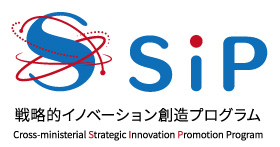B1-02 Development of recycled- and bio-plastic composites utilizing dry-defibrated post-consumer paper and garment waste
Principal Investigator
SEKI Shunichi(SEIKO EPSON CORPORATION)
Background
- Plastic depends on underground resources. In Japan, a large percentage of plastic is thermally recycled.
- Bio/recycled plastics face challenges in terms of cost and mechanical performance.
- Epson’s Dry Fiber Technology - which defibrates used paper and recycles it into new paper without the use of water - is being applied to create value-added products to promote a plastic-free society.
Purpose
- Promoting the transition to a circular economy by developing composite materials that utilize currently underused fibers, and the molding technology necessary to process said composite materials
Intermediate- and end-goals
- Fiber-reinforced composite with all of the following properties:
- elastic modulus > 2 GPa
- impact strength > 10 kJ/m2
- melt-flow properties compatible with current injection molding manufacturing for large parts
- Integrate the developed composite material into our products
Research and development details
Theme A: Material and process technology
- Composite material made from post-industrial textile waste and degraded recycled polypropylene
- Composite material consisting of bio-plastic binder and a high concentration of cellulose fiber filler having both high elastic modulus and high impact resistance
- Optimizing dry-process-defibrated fibers to achieve high-filler-concentration composites with good formability
Theme B: Analysis of composite materials
- Development of 3D-imaging technology to visualize cellulose fibers in composite materials
- Small density difference between fibers and plastic stymies determination of the structure of dispersed fiber network
- Use of coherent x-rays to image composite materials with sub-micrometer resolution
- Predict mechanical and melt flow properties from fiber size, morphology, and dispersion
- Development of chemical analysis technology for fiber/plastic interface
- Existing high-luminance facilities insufficient to observe organic-organic interfaces
- Use low-energy, high-luminance x-rays to visualize interface static and dynamic state with few-nanometer resolution
- Correlate observed interface structure with impact strength and fiber-pull-out characteristics to probe composites’ failure mechanism, use mechanism for simultaneous optimization of composite modulus and impact strength
Theme C: MI/PI
- Construct database linking material processing and evaluation data to drive material development
- Develop multi-simulation for the integrated investigation of the correlation between composition, fiber dispersion, mechanical properties, and formability

